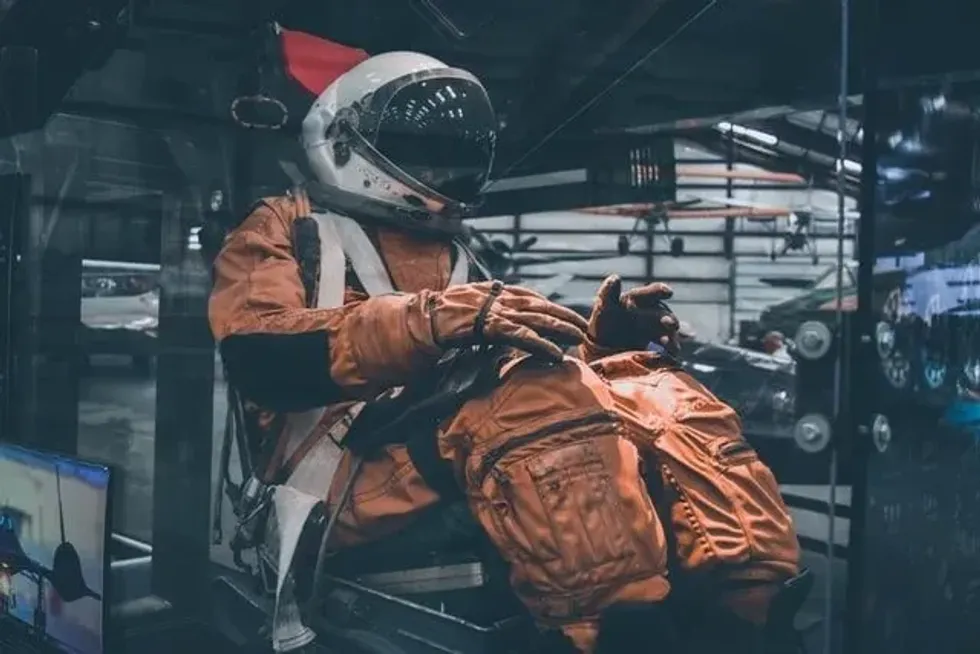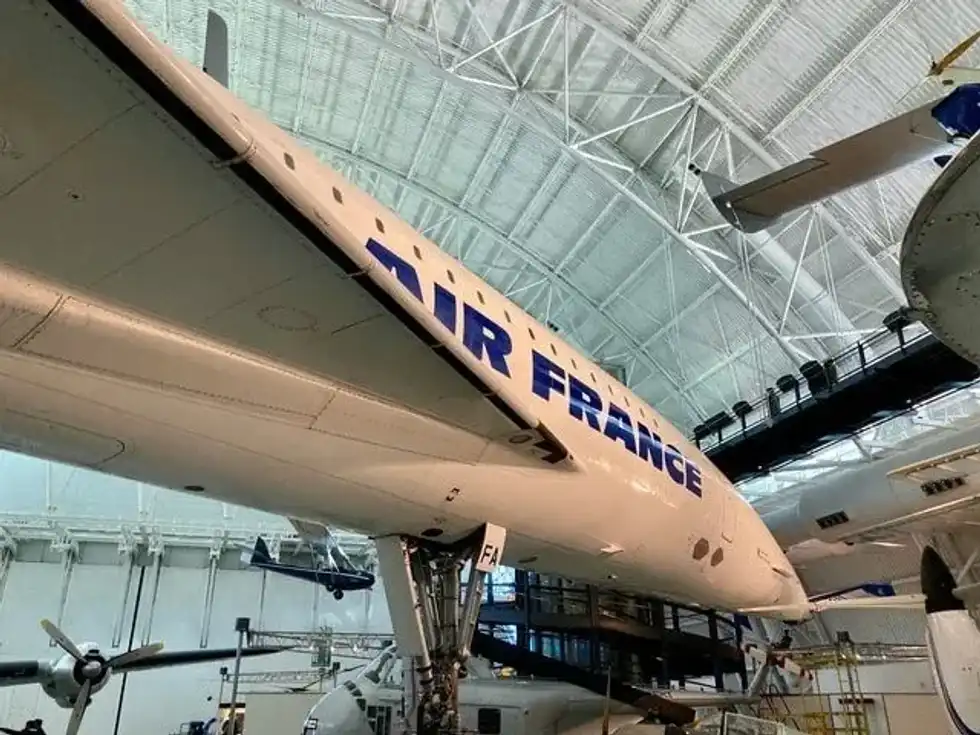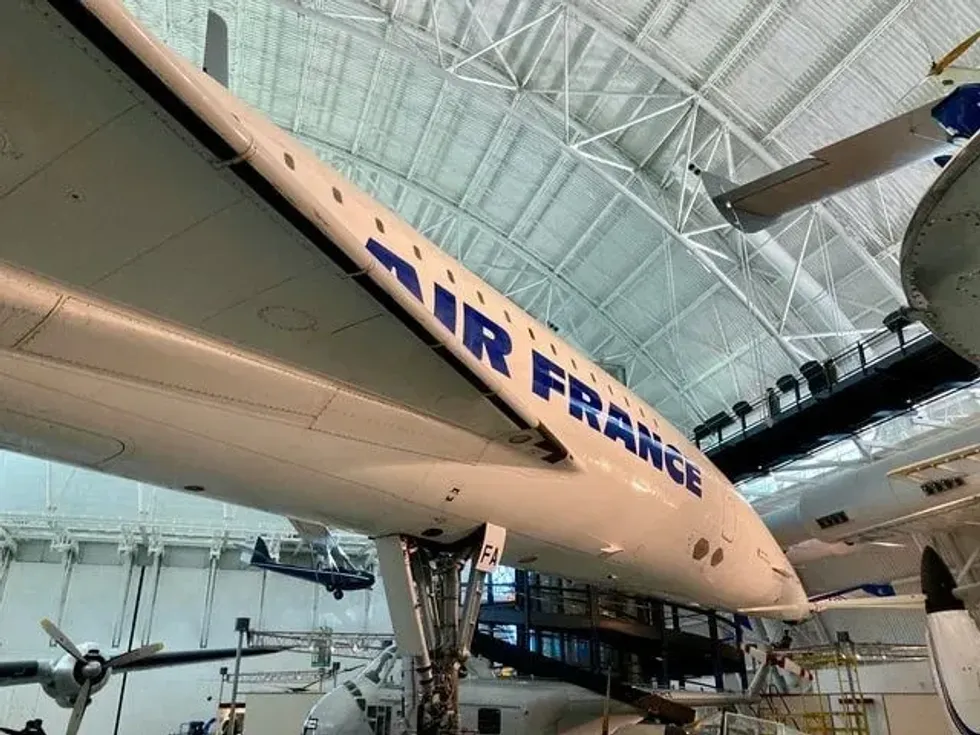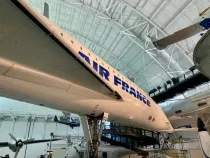Fun And Interesting Air And Space Museum Facts For Kids

The National Air and Space Museum contains the greatest collection of vintage spacecraft and airplanes in the world.
The National Air and Space Museum is the largest and most recognized museum dedicated to visible aircraft and space in the world; a visit to this place would never let you down.
The National Air and Space Museum contains the biggest and most important collection of aviation and space objects in the world, as well as associated works of art and historical information.
All of the pieces at the National Air and Space Museum hold great importance. The National Air and Space Museum operates two iconic venues that host more than seven million people each year, making it America's most visited museum.
The Center for Earth and Planetary Studies is also located at the National Air Space Museum. Continue reading to find out more National Air and Space Museum facts.
Significance Of The Air And Space Museum
Smithsonian National Air and Space Museum's collection of aviation and other relics is one of the finest in the world. The Udvar Hazy Center at the National Air and Space Museum has a lot of significance behind its establishment.
The Smithsonian National Museum is one of the most visited museums in the world. The aim of the National Air and Space Museum is to preserve and display aviation and spaceflight artifacts in order to remember, educate, and inspire visitors.
Among its more than 68,000 pieces, the museum has the biggest collection of vintage airplanes and spacecraft in the world, and it serves the public through exhibitions, public events, educational activities, publications, and electronic outreach.
Did you know that the Mercury Friendship 7 spacecraft, flown in Earth's orbit by John Glenn in 1961, is displayed at the entrance of the building?
At the Air Museum, you would be able to see aircraft from early times, spacecraft replicas, lunar space suit sets, common module Columbia and many other things on display.
The Smithsonian National Air and Space Museum is also home to the Center for Earth and Planetary Studies, which conducts innovative research and outreach efforts in planetary sciences, as well as a major center for historical study on aviation and spaceflight and associated science and technology.
Records Are Kept In The Air And Space Museum
The Smithsonian National Air and Space Museum's archive collection spans the history of aviation.
Documents, images, motion pictures, film and video, and more than two million technical drawings are among the visual and literary elements which you can find at the National Air and Space Museum. Here are some of the records which are kept at the National Air and Space Museum.
Aeronautics Department: The Aeronautics Department at the National Air and Space Museum is in charge of research, collections, exhibition planning, and public outreach related to the history of flight in the atmosphere. Human flight is studied from a technological, military, political, economic, social, and material culture standpoint.
Scholarly and popular publications, exhibits, and a variety of public initiatives are used to communicate research.
The staff of this division of the National Air and Space Museum collects and studies historic and technologically noteworthy airplanes, as well as a wide range of associated equipment and cultural artifacts. Both the exhibition and study collections contain these objects.
Space History Department: The space history department is one of the critical bodies of the National Air and Space Museum.
The museum's collection, which is related to space activities, historical research, and display activity, is centered in the Space History Department. The records for space are kept here.
Rocketry, computers and avionics, spacesuit, spacecraft, and commercial spacecraft, army space, space science, ground testing, space-based planetary science and astronomy, and foreign space programs are among the fields in which the department's curators and scholars write, present, collect artifacts, and prepare displays.
Planetary Studies: This department also keeps its record inside the National Air And Space Museum.
The Center for Earth and Planetary Studies was founded in 1973 and had a collection of more than 300,000 photos and images of Earth's orbit, moon, and planets, many of which were collected from satellites that orbit our planet and from manned and unmanned space missions.
Planetary geology, meteorology, and seismic mapping of planetary surfaces, geologic and subsurface dynamics in dry and semi-arid parts of Earth, and case analysis of volcanic and tectonic landscapes on Earth and other terrestrial planets are among the activities and records about which are present with the department.
Department Of Collections: The department which deals with the collection of documents at the National Air and Space Museum is principally housed within the Udvar Hazy Center.
The Administrative Section of the Collections Department, the Preservation and Restoration Unit, the Conservation Unit, and the Office of the Registrar make up the Collections Department for the National Air and Space Museum.
The Collections Department is in charge of the long-term protection, protection, preservation, and restoration of artifacts, which can be found in the National Collection of Aeronautics and Space, as well as the collections' physical maintenance.
Archives: The National Air and Space Museum's archives are in charge of the paper, video, and image holdings related to aviation and aerospace history and technology.
More than 1 million aircraft engineering drawings, on film or paper, from the 1880s to the '70s, as well as many technical manuals, text collections, collages, and other picture collections, are among the document collections.
Queries from the general public are welcome in writing and by appointment, scholars can visit the archives to do their own study.
The Udvar-Hazy Center, unlike the mall building, displays artifacts in an upgraded open-storage architecture that spans two massive linked things, the Boeing Aviation Hangar and the James S. McDonnell Space Hangar. The show has more than 2,600 aviation, 1,050 spaces, and 43 art pieces.
The Donald D. Engen Observation Tower, the Airbus IMAX Theater, and the Mary Baker Engen Restoration Hangar are among the attractions which you can also have a look at while visiting the National Air and Space Museum.

Are things real in the Air and Space Museum?
People who go to the National Air and Space Museum frequently express their doubts regarding the authenticity of the artifacts which are on display.
What is real and what is not depends on the things which you will be seeing at the National Air and Space Museum. Some of these National Art and Space Museum artifacts are more real than others.
Apollo Lunar Module: You might see the Apollo lunar module in the National Air and Space Museum and wonder to yourself, wasn't the real one left on the moon itself?
Before the moon landing actually happened, the LM-2 module, which is on display at the National Air and Space Museum, was utilized as an engineering backup.
The LM-2 module was one of 12 lunar modules created for Project Apollo, and for exhibition at the museum, the module was redesigned to look like the Apollo 11 Eagle. The unmanned modules orbited Earth to test separation, rendezvous, and connection with the similarly unmanned command and service modules.
The second module for the Apollo Mission, however, was redirected to ground testing after the success of the flight of the first module.
The two modules were designed without landing gear since they were never intended to land; the gear was later retrofitted to the second module during the module's drop tests, which mimicked the speeds and probable impact angles that astronauts may encounter.
The ascent stage of the second module of the Apollo mission was on exhibit at the United States pavilion in Japan, in 1970, with a piece of rock from the moon which was called the Spirit of St. Louis, and other relics from throughout the country.
The ascending stage was rejoined with its descending stage when it returned to the Smithsonian National Museum of Air and Space, and the ensemble was transformed to appear like the Apollo 11 lunar module.
With the lunar module, there is a flag on display.
The 1903 Wright Flyer: Many people who visit the National Air and Space Museum find it hard to believe that the actual plane, which was built by the Wright brothers, has been placed at the spot.
The 1903 Flyer was created and kept in a shed behind the bicycle business of the Wright brothers in Dayton, Ohio, for more than a decade before it was completely forgotten about. The containers were immersed in water and dirt after a flood devastated the area.
The world's most renowned airplane was not uncrated and rebuilt for display at the Massachusetts Institute of Technology until 1916.
Before loaning the plane to the Science Museum in London in 1928, it was decided to restore the Flyer and replace its fabric covering.
The original Flyer was presented to the Smithsonian Institution in 1948, where it was promptly displayed and has remained on display ever since.
It was cleaned briefly before being moved inside the National Air and Space Museum building, but it was disassembled, repaired, and conserved in 1985. A new fabric covering, as close to the original as possible, was applied as part of the restoration to make the Flyer look great again.
The workers of the National Air and Space Museum sewed the cloth exactly as it had been in 1903, using the stitching on the original wing as a pattern.
Space Shuttle Discovery: The space shuttle Discovery, which flew more than 148,000 miles before arriving at the Udvar Hazy Center in April 2012, is housed at the National Air and Space Museum and is without a doubt the real thing.
While NASA's maintenance crews would have quickly replaced the beaten up space shuttle Discovery slabs upon return, the National Air and Space Museum wanted to demonstrate the effects of rejoining Earth's atmosphere, so tourists to the shuttle exhibit see the spacecraft in all of its charred greatness, just as it appeared the day it came back to Earth.
However, certain dangerous elements had to be removed before the display of the Discovery space shuttle. One of those elements comprised propellant leftovers in the orbital maneuvering system, reactivity control systems, and electrical generators.
The explosive charges discovered throughout the shuttle, including in the nose wheel, side door, and drag chute system, were also eliminated before the space shuttle was put on display. Some parts of the space shuttle, like the main engines, were removed, but NASA kept them for future missions.
Every airplane or space-related item at the National Air and Space Museum is authentic, but some are test devices rather than flying hardware; these include things such as the Hubble Test Telescope. If there's any uncertainty, the labels in the galleries will tell you all you need to know; they clearly mention things that are just replicas.
Facts About The Air And Space Museum
Here are some of the most interesting facts about the National Air and Space Museum.
The Largest Museum: There are a total of 19 museums under Smithsonian's which include the National Air and Space Museum, which houses one of the Institution's nine research institutes, the Center for Earth and Planetary Studies. The National Air and Space Museum boasts the world's greatest collection of vintage spacecraft and aviation artifacts, with over 40,000 items.
The National Air and Space Museum offers many interesting exhibits, such as those focused on moon rocks.
Naming Of The Museum: In 1946, Harry Truman, who was president at the time, signed Public Law 722, which established the National Air Museum, which was the forerunner of the Air and Space Museum. These art treasures were scattered around the country until Congress approved funding to build the spectacular Air and Space Museum.
Location Of The Museum: The National Air and Space Museum has two locations. One museum is located in Washington, D.C., and the other at Dulles International Airport in Virginia and its name is Steven F. Udvar-Hazy Center.
Removed Relics: There is a particular artifact at the National Air and Space Museum which has been removed. The S.S. Pussiewillow II, an electric, moving sculpture placed in the National Air and Space Museum, is said to be the oddest exhibit in the museum.
The S.S. Pussiewillow II was kept in storage for approximately 20 years, yet people regularly call to inquire about it. They removed it from there due to power outages and a little fire which was actually caused by the artifact.
The Wright Flyer: The Wright Flyer, which took its first flight back in 1903, was the first powered airplane to show flight. It was designed by the popular Wright brothers. After December 1903, the machine was never flown again.
The Flyer machine was taken apart and fixed. It was housed at the Science Museum for 20 years, during which time Orville Wright and the Smithsonian Institution were at odds. In 1948, the Flyer was permanently added to the collection and displayed at the Museum.
Movies: A lot of people do not know, but you can watch space-related movies in the National Air and Space Museum. The National Air and Space Museum also offers a once-in-a-lifetime opportunity to see movies on 5-story high screens. It contains a Langley IMAX theater. The Albert Einstein Planetarium, which seats 200+ people, is also part of the museum.
We Want Your Photos!
More for You
See All
Master of Computer Science

Abhijeet ModiMaster of Computer Science
An experienced and innovative entrepreneur and creative writer, Abhijeet holds a Bachelor's and Master's degree in Computer Application from Birla Institute of Technology, Jaipur. He co-founded an e-commerce website while developing his skills in content writing, making him an expert in creating blog posts, website content, product descriptions, landing pages, and editing articles. Passionate about pushing his limits, Abhijeet brings both technical expertise and creative flair to his work.
Disclaimer
1) Kidadl is independent and to make our service free to you the reader we are supported by advertising. We hope you love our recommendations for products and services! What we suggest is selected independently by the Kidadl team. If you purchase using the Buy Now button we may earn a small commission. This does not influence our choices. Prices are correct and items are available at the time the article was published but we cannot guarantee that on the time of reading. Please note that Kidadl is a participant in the Amazon Services LLC Associates Program, an affiliate advertising program designed to provide a means for sites to earn advertising fees by advertising and linking to Amazon. We also link to other websites, but are not responsible for their content.
2) At Kidadl, we strive to recommend the very best activities and events. We will always aim to give you accurate information at the date of publication - however, information does change, so it’s important you do your own research, double-check and make the decision that is right for your family. We recognise that not all activities and ideas are appropriate for all children and families or in all circumstances. Our recommended activities are based on age but these are a guide. We recommend that these ideas are used as inspiration, that ideas are undertaken with appropriate adult supervision, and that each adult uses their own discretion and knowledge of their children to consider the safety and suitability. Kidadl cannot accept liability for the execution of these ideas, and parental supervision is advised at all times, as safety is paramount. Anyone using the information provided by Kidadl does so at their own risk and we can not accept liability if things go wrong.
3) Because we are an educational resource, we have quotes and facts about a range of historical and modern figures. We do not endorse the actions of or rhetoric of all the people included in these collections, but we think they are important for growing minds to learn about under the guidance of parents or guardians.







